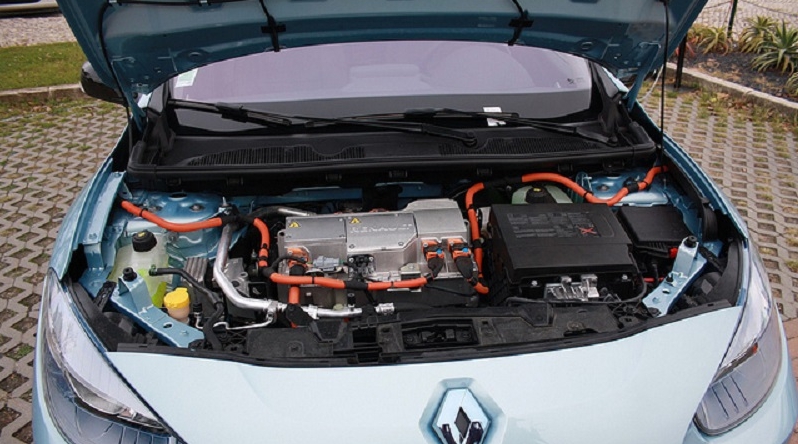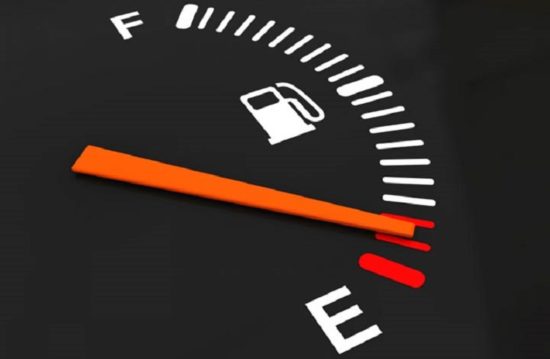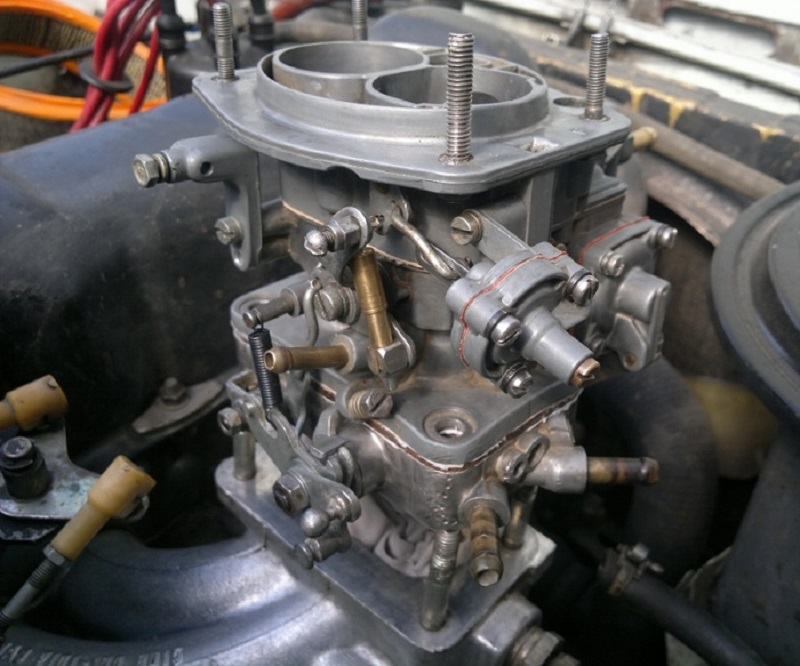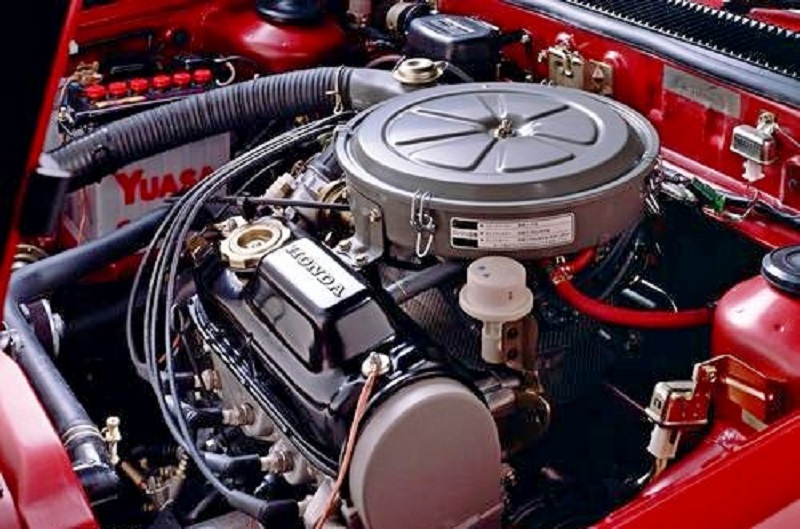Sooner or later, every motorist begins to look after how much fuel consumes its car, comparing the information obtained with the flow rate indicated in the passport, the value of which is a relative concept. And when fuel consumption increases, the car owner begins to look for ways to reduce the "appetite" of its vehicle. About this further in the article.
Content
Types of automotive engines
The first full-fledged type of DVS was designed in 1806 and he belonged to the brothers Niepiece. After this important historical fact, there was a short calm. However, in the XIX century, three legendary Germans marked the beginning of the automotive industry - Wilhelm Maybach, Gottlieb Daimler and Nicholas Otto. After that, the engine received many options and modifications that apply to this day.
Nowadays there are four main types of DVS:
- Gasoline engines.
- Diesel power units.
- Electrical motors.
- Hybrid installations.
gas engine
Gasoline DVS are engines, whose nutrition is gasoline. Fuel is fed from the fuel tank using the pump (electrical or mechanical) on the injection system. Gasoline motors are carburetor and injection.
The first primitive carburetor has almost a century of development history and was developed at the end of the XIX century in Germany. Carburetors can have from one to six chambers (1, 2, 4 or 6 cameras). In addition, there are quite a few prototypes.
The principle of operation of the carburetor is quite simple: the fuel pump delivers a fuel to the float chamber, in which gasoline is mechanically passed through the jets (the amount of fuel injected is regulated by the driver using the accelerator pedal), and enters the intake manifold. The disadvantages of the carburetor include the fact that it is quite sensitive to adjustments and does not comply with international environmental standards.
Injector DVS is the type of fuel injection device into the cylinders of the power unit. Injector injection is divided and mono. To date, this system is increasingly upgraded to reduce CO2 emissions into the atmosphere. It is worth noting that nozzles are used for injection, which even earlier began to be applied on diesel engines.
With the transition to this system, cars began to equip electronic control units to adjust the composition of the air-fuel mixture and notification of faults in the system.
diesel engine
The diesel engine is the type of power unit, spending diesel fuel. Motor elements and basic systems are identical to a gasoline "brother", the difference is to ignite the mixture and the injection system. There are no spark plugs in the diesel engine, since the ignition of the working mixture is not required from the spark.
On the engines of this type, the gas candles are installed, warming air in the combustion chamber greater than the flammability temperature. Then, by means of nozzles, spray fuel is fed, which burns, which creates sufficient pressure to actuate the piston, spinning the crankshaft.
electric vehicle

Electric vehicles are TC equipped with electric motors. To work, such engines need electrical energy in batteries that have a small container, which is why such cars have low stroke stock. This circumstance is considered a lack of electric vehicles restricting their widespread use. However, due to the deterioration of ecology, development is carried out in this direction, and it is likely that it will be very soon a socket for recharging electric vehicles will be near gas station.
hybrid engine
The hybrids are probably the most desired engines in our time. This is a mixture of electric motor and gasoline engine.
There are several variations of such a motor:
- The electric motor and the engine function simultaneously, which makes it possible to save fuel consumption.
- Motor runs on alternate nutrition. Initially, the movement is performed on gasoline until the battery is charged by the generator. Then the motorist can go to power.
The main causes of increased fuel consumption (in detail)
The reasons why the TC begins to consume more fuel, rather than indicated in the passport, or over the level established for the specific period, can be conditionally divided into subjective and objective.
The latter category includes exclusively technical problems of nodes that wear out, fail and are no longer able to function normally.
Subjective reasons include t. N. The human factor when an increase in fuel consumption can occur as a result of car overload, driving style, installation on an additional equipment and so on.
A number of the most common technical reasons for increasing consumption of diesel engine or gasoline can be distinguished:
- Later ignition. Even if the ignition advance angle displacement is insignificant (by 1 degree), the fuel consumption can increase by 1 percent. Accordingly, the more this angle is shifted, the more fuel consumption increases.

- Clamps in Candle. The reason for increased consumption can be incorrectly exposed gaps in the candles (i.e., a violation of the smallest distance between the electrodes - side and central), which entails interruptions in the functioning of the candles and an increase in fuel consumption by four percent.

- Low oh temperature. If the temperature of the coolant is below the calculated one, the motor applies more fuel to warm up, as a result of which the fuel consumption can increase by an average of ten percent.

- Wear with a cylindrophone group. As a result of the release of the cylinder-portion group nodes (as a rule, this occurs on large runs or with a debt of the use of poor-quality fuels), fuel consumption increases to a significant extent.

- crank mechanism. As a result of the output of the piston rings, the cylinder wear and pistons decreases compression in the cylinders, which drops the power of the motor. To increase power, the driver accounts for more often to press the accelerator pedal, which entails the increased consumption of fuel.

- Clutch wear. When the clutch nodes breakage and, therefore, slip, constantly have to fuel, which inevitably entails an increase in the fuel consumption.

- Depreciation of the mechanism of gas distribution. Under the conditions of wear of this mechanism, the cylinders lose their tightness, as a result of which the pressure at the beginning of the expansion tact is reduced, as well as the end of the compression tact. This entails the loss of the power of the engine and improving the fuel consumption.

- Convergence. Not adjusted collapse convergence provokes the loss of controllability, the rapid abrasion of the tires and the veins of the vehicle on the road, which as a result affects the cost-effectiveness.

- Air filter. The violation of the filter replacement periodicity can also provoke an increase in the fuel "appetite" of the engine, since the scored filter interferes with the flow of air, which is needed for the effective combustion of the combustible mixture.

- Reduced pressure in the tires. Low pressure in the tires leads to high rolling resistance, and this entails increased gasoline consumption.

- Malfunction of thermostat. The breakdown of this unit can, especially in winter, entail an insufficient heating of the motor to the operating temperature, which is why fuel consumption increases.

- Pollution of fuel injectors. As a result of the appearance of resinous sediments on nozzle nozzles (arise in the use of low-quality fuel), their tightness is disturbed, which is why the fuel enters the cylinder in insufficient quantities and burns enough effectively. And this, among other things, leads to an increase in fuel consumption.

- Unstable functioning of electronic control motors. As a result of errors, setting oxygen sensors, incoming air flow meters, DPDZ, incorrect information about the functioning of the main motor nodes is transmitted to the ECU. Because of this, the power unit receives an enriched or depleted combustible mixture, which leads to an increase in the fuel consumption and the loss of the internal combustion.

To subjective reasons, due to which the consumption of fuel consumption is increased, can be attributed:
- TC overload. By loading the car over the measure, you, thereof, provoke an increase in fuel consumption. Every one hundred kilograms of overload increases the fuel consumption for ten percent, an empty roof trunk increases consumption by five percent, and loaded by 40%. At the same time, the construction of the luggage compartment affects the fuel consumption, its aerodynamicity, as well as the vehicle speed.

- Movement with open windows. Under conditions of continuous driving with open windows at speeds of more than 50 kilometers per hour, the aerodynamic characteristics of the vehicle deteriorate, and the fuel consumption increases by four percent.

- Sharp acceleration / braking. Such a jump-shaped ride style entails a sharp increase in fuel consumption, since the motor is constantly experiencing heavy loads and therefore requires more fuel.

- Installation of additional equipment (spoilers, bodies). All data not provided by the manufacturer of the design violate the aerodynamic parameters of the car, which leads to an increased fuel "appetite".

- Permanent air conditioning / tape recorder functioning. The nutrition of climatic or electronic systems is a significant amount of fuel. Thus, when moving with the maximum power, the air conditioner is a fuel consumption can increase by 15 percent, and when driving with a constantly included multimedia system - by 7 percent.

- The use of liquids and oils with unsuitable for transmission and motor parameters.The manufacturer does not know how to pour into a transmission or engine of liquid and oil with specific viscosity parameters - during numerous tests, it is the type of oil that is best suited for these aggregates. If the car owner chooses, for example, oil with a viscosity of a more recommended, then consumption may increase to 15 percent.

- Application of long-distance headlights. It is worth noting that the constantly incorporated far light can provoke an increase in the flow rate of ten percent, whereas the close-on increases costs for five percent.

Ways to eliminate increased fuel consumption (in detail)
Let's start with objective factors:
- To correct the operation of the ignition, set the Ignition Proportic Angle Corners. The correct installation of the ignition angles is checked using a specialized diagnostic scanner, and is regulated by means of a stroboscope.

- The wrong gap between the central and side electrodes of the ignition candles is eliminated using a special tool with affairs. Before adjusting the gaps, measure their value with the help of a wire round climb. In the absence of such a toolkit, you should contact a service station.

- With the wear of the cylindrophneum group nodes (piston fingers, rings, pistons), they will be replaced.

- The causes of the low temperature of the coolant can be several. Check the system for tightness and replace the exhaust elements. It is possible that the coolant is outdated and cannot cope with its task, so it is necessary to replace it.

- With the wear of the elements of the crank-connecting mechanism (connecting rod and indigenous bearings) will have to be replaced.

- If the clutch fails, it will be required to replace it, since it is often not subject to repair.

- Before removing the damage to the gas distribution mechanism, it is necessary to perform diagnostics to detect the causes of the failure in its functioning. Then the gas distribution mechanism disassemble and change the wear elements.

- An adjustment of the similarity-collapse is performed at a service station having a similarity correction booth and special diagnostic equipment. It is impossible to establish the correct corners of the wheels of the wheels without using special equipment.

- It is necessary to systematically (preferably after each fuel refueling) perform testing of tire pressure and pump them on time. If the tires are worn or defective the inflating valve, change them to new ones. Also recommended installation of tires that have low rolling resistance.

- The replacement of the air filter is recommended for each replacement of the motor oil, as well as depending on the operating conditions of the car. The harder conditions in which the vehicle is operated, the more often the air filter should be changed.

- If the thermostat work is incorrect, dismantle it, pre-drained from the coolant system, and check the valve operation. If the valve encourages both in intermediate, and in extreme positions, clean it from contamination. If it does not help, replace the thermostat.

- If the nozzles are contaminated, you will have to perform a cutting procedure. It is performed in two ways: with the help of additives in fuel of special cleansing additives or a service station by washing the fuel system with special fluids supplied to the pressure system.

- The work of the executive mechanisms of the ECU and sensors is diagnosed with a special electronic equipment - a computer scanner. Then, on the basis of this information, it is determined which specifically a junk sensor, and it is replaced or repair.

With subjective reasons for increasing fuel consumption, it is easier to fight - it is enough to remember the basic rules that will help to temper the "appetite" of the car:
- Try not to overload the vehicle over the measure, for which you need to know the maximum carrying capacity of the car. If the roof trunk is rare, it is desirable to dismantle it.

- Do not open wide windows. Leave only cracking gaps. And then only for short time intervals.

- Work out a calm and smooth driving manner. Do not need to dramatically break off, smoothly switch the transmissions and proceed to the highest speed as early as possible. Use braking engine and rolling movement.

- If possible, avoid mounting on the car spoilers, kenguryatnikov and kites, which worsen the aerodynamic characteristics of the vehicle.

- When working the multimedia system, it is advisable to take breaks. If you turn on the air conditioner, do not let it work for a long time at maximum power. This is especially important when driving in the city, because when driving on the highway, where the motor functions on high speed, the power selection for the compressor is not as follows as in the city (exceptions are overtaking, under which it is desirable to disable climate control if the motor is not very powerful).

- To lubricate the transmission and the engine, it is desirable to apply liquids and oils whose viscosity parameters correspond to the recommended manufacturer.

- It is unlikely that any of the motorists constantly applies far lights, and movement with the muzed light in accordance with traffic rules is required. So in this case, it will not be possible to avoid fuel consumption, except to build LED daytime lights on the car, which consume less energy than ordinary lamps.

Useful advice
As you can see, the mass of factors, both objective and subjective, affects the increase in fuel consumption. Therefore, it is necessary to systematically perform the diagnostics of these systems, as well as to follow driving advice, which will enable reduce fuel costs. At the same time, remember that the combination of a number of factors affecting the increased consumption of fuel will not lead to an increase in the flow rate. For example, when moving with a loaded trunk, clogged nozzles included in the near light and open windows, fuel consumption will not increase by a total of 60 percent, since everything will depend on the weight of the trunk, the degree of contamination of nozzles and other factors.
Related Materials
- Stove 2110, bad warm stove 2110, VAZ 2110 heating system, repairing the heating system VAZ 2110 with their own hands
- VAZ 2114 stove blows with cold air, stove 2114, bad warm stove VAZ 2114, device and repair of heating VAZ 2114 do-it-yourself, removing the stove VAZ 2114
- How to subdominize the car. How to put a jack. Types of jacks for cars.
- VAZ 2109 Fuse Block, VAZ 2109 Fuse Block Carburetor, VAZ 2109 Fuse Block Injector, Old VAZ 2109 Fuse Block, VAZ 2109 Fuse Block, VAZ Fuse Block 2109
- Car exhaust gas catalyst, faulty catalyst, pluses and cons of the catalyst, how to change the catalyst on the planeencitel
- Stove blowing cold air VAZ 2114, badly blowing the stove VAZ 2114, why badly blowing the stove VAZ 2114
- How to find out the owner of the car by the number of his car, check the car by the number of the traffic police machine, check the car by the state number of the car for free
- How to choose Used tires, Useful Tips
- Winter car road, pressure in passenger car tires in winter, good battery for the car in winter, whether to warm the car in winter
- In winter, the car is poorly started. How to make a car in winter, do you need to warm up the car in winter, useful tips
- Economy fuel consumption machines, the most economical car consumption
- Tires brands for passenger cars, labeling of car tire labeling, residual passenger car tire protector, how to pick a tire on a car brand, car tire tread pattern
- Working transmission operation, mechanical gearbox clutch work, driving with manual gearbox, useful tips
- Rear beam Peugeot 206 sedan, rear beam device Peugeot 206. Rear beam Peugeot 206 Malfunction, repair of the rear beam Peugeot 206
- Diesel fuel in winter, additive for diesel fuel in winter, how to choose the best diesel fuel
- Diesel winter does not start. How to start diesel in winter, heating diesel in winter.
- Japanese bridgestone tires, winter studded bridgestone tires, bridgestone tires brand
- Tire marking decoding for passenger cars, labeling wheels, how to choose the right tires on the disks
- Diesel engine in winter, launch of the diesel engine in winter, what oil to fill in a diesel engine in winter, useful tips
- LED backlight of the car, the backlight of the bottom of the car, the backlight of the legs in the car, the backlight in the door of the car, the backlight of the car is fine
- Recovered tires, bus tire, restored tire protector, can I use them
- Choose winter tires, which is a winter tires, which pressure in winter tires should be marked with winter tires, how to choose the right winter tires, the best winter tires 2019
- Steering rail rail, knock of steering rack, reasons for the knock and repair of the steering rack do it yourself
- Cameless car tires, a set for repair of tubeless tires, repair of the cannon-free tire do it yourself
- Russian tires, Russian tires Winter, Russian All-season tires, Voronezh AMTEL tires, Tires "Matador Omsk Tire", Kama-tires are world-class bus
- How to open a car without a key. Lost the key from the car what to do, the key from the car inside the car
- Silent tires, quiet winter tires, quiet studded bus, which tires to choose, overview tires
- Tires and safety, safety of the bus, why it is necessary to constantly monitor car tires
- Rules of safe driving of the car in the rain and slush, safe driving of the car for beginners
- Rust converter which is better for cars, rust converters to choose how to use rust transducer, professionals
- Polishing the body of the car do it yourself, how to choose a polishing paste, useful tips
- Engine durability, engine life, how to extend engine life
- Knock in the car. Knock when moving the car. What can knock in the car. How to determine the cause of the knock.
- ABS car, what is ABS car, ABS system malfunction, ABS diagnostics
- Overtaking a car when you can start overtaking a car, rules of traffic rules
- Fuel pump VAZ 2110, VAZ 2110 gas station scheme, VAZ 2110 fuel pump device, VAZ 2110 gas station repair,
- Automotive antennas for radio, automotive antenna device, car antenna do it yourself
- Front suspension Kalina, device front suspension Kalina, knock in front suspension Kalina, repair of front suspension Kalina
- Shock absorber Oil, best oil shock absorbers, pumping oil shock absorbers, how to properly pump oil shock absorber
- Clutch malfunctions, touches clutch, causes a clutch malfunction, how to eliminate





















Comments